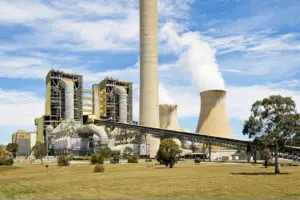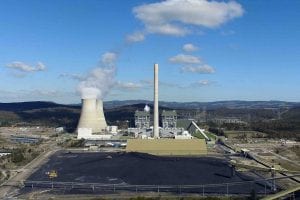The Australian Greens have written to the Morrison Government demanding an explanation for its failure to publish the latest quarterly update to Australia’s greenhouse gas emissions inventory, the Government’s first failure since being re-elected in May.
Greens leader Richard Di Natale has written to Senator Simon Birmingham, who represents the environment minister in the Senate, demanding answers, in a letter obtained by RenewEconomy.
“I am writing to remind you of your responsibilities to the Senate. Australia’s growing emissions are data of significant public consequence and should be treated with the same level of priority as ABS publications on National Accounts, Balance of Payments, Consumer Price Index and Labor Force data.” Di Natale wrote.
“They are released like clockwork according to their pre-determined publication dates”.
Citing advice provided by the department at Senate estimates that the five-month period was sufficient to collect and publish the greenhouse emission data, Di Natale has suggested there has been a political intervention preventing its publication.
“Given this testimony from the Department, the only conclusion is that this publication was held back for political reasons by the Minister’s office”, Di Natale wrote.
“I seek your answers explaining the reasons for the delay and reserve my right to put a motion to the Senate should the government continue to demonstrate signs of contempt for the Senate and its role in scrutinising the use of executive power”.
Under a Senate order, the deadline for the publication of the quarterly update was last Friday, but the update had not been released via the Department’s website as at 2pm on Monday.
When queried by RenewEconomy, a department spokesperson said “we anticipate the quarterly Uupdate of Australia’s National Greenhouse Gas Inventory: December 2018 will be released soon.”
The Government has previously dragged its feet on the release of the quarterly emissions updates, and at times was taking up to seven months to release the data.
The Climate Council slammed the Government for failing to release the data by the specified deadline.
The @climatecouncil is calling on the Federal Government to release its greenhouse gas emissions data, after it failed to share the information with the Australian public last week.
— Climate Council (@climatecouncil) June 3, 2019
“The Government is obliged to share this very important information with the public. And it was supposed to do this last Friday. The only thing we can conclude is that emissions are continuing to rise, as they have done under the Coalition Government for the past four years,” Climate Council CEO, Amanda McKenzie said.
“The Coalition Government has a history of burying bad news on climate change. It has repeatedly released data when it is unlikely to draw significant attention. We’ve seen emissions data released on Christmas Eve and late on a Friday afternoon ahead of football grand finals,” said Ms McKenzie.
The quarterly updates have been an important tool in keeping the Government accountable for rising greenhouse gas emissions, but have been withheld for extended periods by a series of Coalition environment ministers.
To solve this, Australian Greens leader Richard Di Natale introduced a Senate motion requiring the Government to publish the National Greenhouse Gas Inventory updates within five months of the end of each quarter. The motion was supported by Labor, and has “continuing effect”, remaining in place until the motion is revoked.
The last quarterly emissions update showed that emissions had risen by 0.9% for the 12 months to September 2018. Greenhouse gas emissions have risen steadily under the Coalition Government, after emissions fell under the carbon price.
Angus Taylor: Total emissions are coming down right now
Barrie Cassidy: They’re up by 0.9 % over the year
The #Insiders panel discuss the Coalition’s energy plans, with @barriecassidy @frankelly08@KarenMMiddleton @Riley7News #auspol pic.twitter.com/76Or7eJRm9— Insiders ABC (@InsidersABC) March 3, 2019
The update for the period ending December 2018 is expected to show that emissions increased in the 2018 year, contradicting consistent claims from the Morrison Government, including energy minister Angus Taylor that emissions are decreasing.
Preliminary figures for 2018 were included in Australia’s latest update to the National Inventory Report, submitted to the UNFCCC Secretariat.
The preliminary figures showed Australia’s emissions including land-use changes rising by 0.4 per cent in 2018. Australian emissions reached an all-time high in 2018, when emissions from land-use change are excluded.
Emissions increases in recent years have been driven by emissions from LNG production (up 18% in 2018), as well as increases in industrial and agricultural emissions, which have outweighed modest falls in emissions in the electricity sector.
The lack of proper policies to limit emissions across the Australian economy has led to major industry and investor groups to call on the Government to introduce some form of economy-wide emissions reduction policies.
Former Environment Minister Melissa Price, who was noticeably absent from the 2019 election campaign, was replaced by former health minister Sussan Ley, while energy minister Angus Taylor had “emissions reduction” added to his portfolio responsibilities.
RenewEconomy has reached out to Ministers Taylor and Ley for comment.







